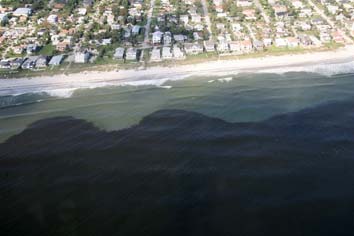

What is CPR?
The Collaboration for Prediction of Red tides (CPR) is a jointly funded project between the Florida Fish and Wildlife Conservation Commission’s Fish and Wildlife Research Institute (FWC- FWRI) and the University of South Florida’s College of Marine Science (USF-CMS). Our mission focuses on development of an automated, coupled physical-biological model capable of predicting and tracking the dominant Florida red tide species, Karenia brevis, within coastal waters of the southeastern United States.
Why do we need CPR?
Our nation’s economy is directly linked to our adjacent seas. Tourism, fisheries, maritime transport, and agriculture are all critical to our economy. Similarly, hurricane storm surge is a matter of great public concern. All of these topics relate to the prediction of the coastal ocean. In addition to red tides, our multifaceted models can be applied to fisheries, search and rescue, and hurricane storm surge, as well as many other societal issues.
CPR will close a major gap in our joint ability to serve the State of Florida and the southeastern United States. It will provide a quantitative method for solutions of multidisciplinary ocean science problems of pressing societal importance. It will serve both regionally and nationally as a test bed for intensive agency/university scientific collaboration as a support network for implementation of public policies as related to matters of economics, natural resources, public safety, and public health.
CPR will merge a network of data sets to initialize and force predictions of the onset, duration, and landfall of red tides along Florida coastlines in conjunction with three circulation models at varying spatial resolution and an ecological model of the plankton food web. Recent reports by the US Commission on Ocean Policy and the PEW Oceans Commission have recognized that merging quality observations with models is a critical next step in applied ocean sciences. Therefore, data assimilation will be a major focus of CPR.
Staff
|
John J. Walsh, Ph.D. Jason M. Lenes, Ph.D.
|
Robert H. Weisberg, Ph.D. Lianyuan Zheng, Ph.D.
|
Brian P. Darrow, Ph.D. Yonggang Liu, Ph.D. |
Jeff Donovan Cliff Merz, Ph.D. |

